Diesel engines are the workhorses of modern industry, powering transportation, logistics, and commerce across the globe. However, with growing concerns over environmental impact and rising fuel costs, the demand for cleaner, more efficient diesel solutions has never been greater. Enter Diesel-Hydrogen Assist Technology (D-HAT™) — an innovative breakthrough that enhances diesel engine performance, reduces emissions, and optimizes fuel efficiency. D-HAT™ is changing the game for fleet operators worldwide, delivering a smarter, greener way to run diesel engines.
The Role of Diesel in the Global Economy
Diesel engines are essential for global commerce. From long-haul trucks to trains and ships, diesel-powered equipment transports 90% of all goods around the world. Diesel packs more energy per gallon than other fuels, making it the preferred choice for heavy-duty applications. However, diesel also accounts for a significant portion of global greenhouse gas emissions, contributing to climate change and air pollution.
Fleet operators are facing increasing pressure to reduce emissions and comply with stricter environmental regulations. But completely transitioning away from diesel is a costly and challenging task, especially when considering the longevity and sheer volume of diesel-powered equipment in use today. This is where D-HAT™ steps in, offering a practical, cost-effective solution to improve diesel efficiency and reduce environmental impact without replacing the engines.
What is Diesel-Hydrogen Assist Technology (D-HAT™)?
D-HAT™ is an aftermarket hydrogen generator designed to work alongside existing diesel engines. The technology operates on a simple yet powerful principle: infusing small amounts of hydrogen into the engine’s air intake to improve the combustion of diesel fuel. By integrating hydrogen, a faster-burning fuel, into the engine’s air-fuel mixture, D-HAT™ increases the overall combustion efficiency of diesel engines.
Here’s how it works:
- Hydrogen Generation Through Electrolysis: The D-HAT™ system generates hydrogen gas by separating distilled water into hydrogen and oxygen using a Proton Exchange Membrane (PEM) cell. This process, known as electrolysis, produces hydrogen on demand, meaning no hydrogen is stored onboard, minimizing safety risks.
- Hydrogen Infusion into the Air Intake: The pure hydrogen gas is injected into the engine’s air intake system. When mixed with the diesel fuel in the engine’s combustion chamber, the hydrogen enables a faster, more complete burn of the diesel fuel.
- Increased Combustion Efficiency: With hydrogen assisting the burn process, diesel engines achieve up to 93% combustion efficiency, compared to the typical 70% efficiency without D-HAT™. This more complete burn produces more power from the same amount of fuel, reducing fuel consumption and minimizing waste.
Revolutionizing Diesel Engines: Key Benefits of D-HAT™
The addition of D-HAT™ to a diesel engine delivers significant improvements across three key areas: performance, cost-efficiency, and environmental impact. Here’s a closer look at how D-HAT™ is revolutionizing diesel engines:
1. Improved Engine Performance
One of the most immediate benefits of D-HAT™ is the boost in engine performance. Diesel engines are known for their power, but they are often plagued by incomplete fuel combustion, leaving unburned hydrocarbons in the engine. This results in carbon buildup, reduced efficiency, and more frequent maintenance.
D-HAT™ helps by introducing hydrogen into the combustion process, which burns 10 times faster than diesel. This faster, more efficient burn pushes the engine’s pistons down with greater force, increasing torque and overall engine power. Fleet operators can expect:
- Increased torque, providing more pulling power for heavy loads.
- More complete combustion, resulting in cleaner engine operation.
- Extended engine life, as reduced carbon buildup leads to less wear and tear.
2. Reduced Fuel Consumption and Maintenance Costs
Fuel efficiency is a critical concern for fleet operators, especially with volatile fuel prices. With D-HAT™, diesel engines burn more of the fuel they consume, leading to significant fuel savings. On average, D-HAT™ users report:
- Up to 10% improvement in fuel economy.
- 30% reduction in maintenance costs due to less frequent engine cleanups and part replacements.
Since the hydrogen burn is more complete, there is less carbon residue left behind. This means cleaner engines, longer intervals between oil changes, and reduced need for engine overhauls. For fleet operators working on tight margins, these savings are substantial and contribute directly to profitability.
3. Lower Emissions and Environmental Impact
As the world moves toward greener energy, the pressure on diesel engines to reduce emissions is intensifying. Diesel exhaust contributes significantly to air pollution, particularly in the form of nitrogen oxides (NOx), carbon monoxide (CO), carbon dioxide (CO2), and particulate matter.
By incorporating hydrogen, D-HAT™ helps diesel engines burn more completely, significantly reducing the output of harmful pollutants. The cleaner combustion process results in:
- Up to 64% reduction in emissions, including CO2, NOx, and particulate matter.
- Compliance with strict EPA and CARB emission standards.
- A reduced carbon footprint for fleet operations, helping companies meet sustainability goals and improve their environmental standing.
The Technology Behind D-HAT™: Proton Exchange Membrane (PEM) Cell
At the core of D-HAT™ is its patented Proton Exchange Membrane (PEM) cell, which safely produces hydrogen on demand. The PEM cell splits distilled water into hydrogen and oxygen using electricity from the engine’s alternator. The system is highly efficient, producing up to 4 liters of pure hydrogen per minute without the need for external hydrogen sources.
The PEM technology allows for:
- On-demand hydrogen production, ensuring no storage of flammable gas.
- Compact design, making the D-HAT™ system suitable for a wide range of diesel applications, from trucks to ships.
- Minimal energy draw from the engine’s electrical system, meaning the benefits far outweigh any additional power consumption.
Is D-HAT™ Right for Your Fleet?
D-HAT™ is a versatile solution that can be installed on virtually any diesel engine, from on-road trucks and buses to off-road generators and marine vessels. Installation is straightforward and takes only a few hours, with no major modifications to the engine required.
For fleet operators looking to improve performance, reduce costs, and meet environmental targets, D-HAT™ offers a practical and proven path forward. By optimizing diesel engines with hydrogen-assisted combustion, fleet managers can enjoy cleaner, more efficient operations without sacrificing power or reliability.
Conclusion: A New Era for Diesel Engines
Diesel engines have long been the backbone of industries worldwide, but as environmental pressures mount and fuel costs rise, fleet operators are searching for cleaner, more cost-effective solutions. D-HAT™ is revolutionizing the way diesel engines operate by harnessing the power of hydrogen to improve fuel efficiency, reduce emissions, and boost overall engine performance.
With its ability to seamlessly integrate into existing diesel fleets, D-HAT™ offers a practical solution for companies looking to enhance their sustainability efforts while maintaining profitability. By improving combustion efficiency and reducing harmful pollutants, D-HAT™ is paving the way for a cleaner, more efficient future for diesel engines.

